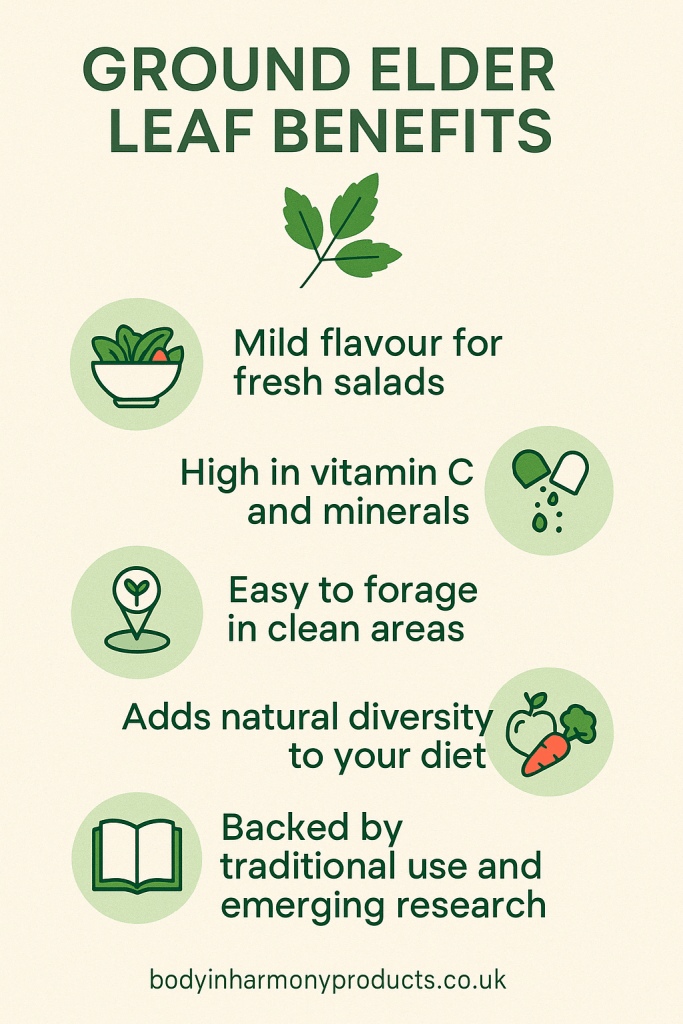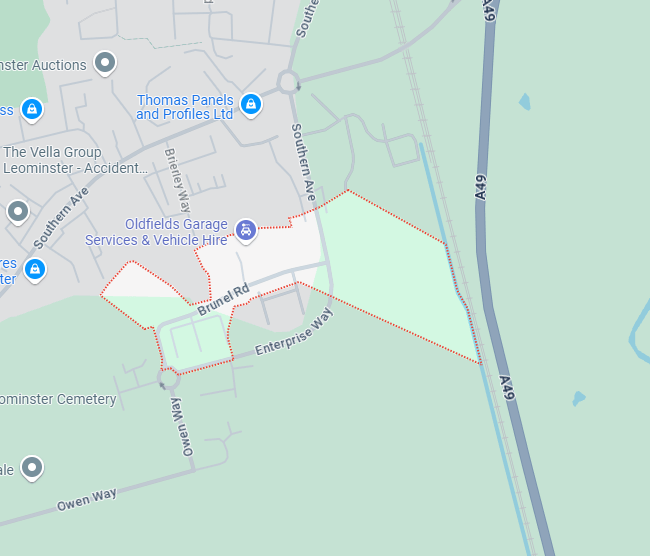Ground Elder Leaf: A Forgotten Wild Edible for Fresh Salads
When it comes to wild edibles, few plants are as overlooked as ground elder leaf. Yet, this humble green has long been valued for its fresh flavour and health-boosting properties. As more people reconnect with nature, ground elder is finally getting the attention it deserves — especially for its role in salads.
What Is Ground Elder Leaf?
Ground elder (Aegopodium podagraria) is a leafy green native to Europe and Asia. Although often dismissed as a garden nuisance, it has a rich history as a nutritious wild food. Traditionally, people picked its young, tender leaves to add a subtle, earthy flavour to meals.
The leaves are best gathered early in the season when they are fresh and mild. Once matured, they can become tougher and slightly bitter, so it’s worth picking them while they are young for the best results.
Why Ground Elder Works So Well in Salads
One of the main ground elder leaf benefits is its versatility in the kitchen. The young leaves have a soft texture and a mild flavour, making them ideal for mixing into salads without overpowering other ingredients.
Their natural lightness means they blend beautifully with other greens, edible flowers, and spring herbs. When added to a salad, ground elder leaves bring a burst of fresh, earthy notes that elevate the entire dish.
Moreover, using wild edibles like ground elder helps you enjoy food that is truly seasonal and deeply connected to the land around you.
Nutritional Highlights of Ground Elder Leaf
Ground elder offers more than just flavour. This unassuming plant is packed with nutrients that support overall health:
-
Vitamin C: Essential for immunity and skin vitality.
-
Potassium, calcium, and magnesium: Vital for heart, muscle, and bone health.
-
Natural antioxidants: Help combat oxidative stress and support cellular health.
Current research suggests that introducing a wider range of wild greens into your diet can deliver broader nutritional benefits than sticking to conventional vegetables alone. Because of this, adding ground elder leaf to your salads can be a simple way to boost your nutrient intake.
How to Identify and Forage Ground Elder Safely
Finding ground elder is straightforward if you know what to look for. Key features include:
-
Triangular, toothed leaves arranged in groups of three to five
-
Hollow, smooth stems
-
White, umbrella-like flower clusters later in the season
For the best taste, pick young, vibrant leaves before the plant flowers. Always forage responsibly by taking only what you need and ensuring you gather from areas free from pollutants or pesticides.
Easy Salad Ideas Using Ground Elder
Using ground elder leaf in your salads couldn’t be easier. Here are a few quick ideas:
-
Simple Spring Salad: Toss ground elder with baby spinach, cucumber, and a light lemon dressing.
-
Wild Herb Mix: Blend ground elder with sorrel, dandelion greens, and rocket for a bold, peppery salad.
-
Edible Flower Salad: Mix with violets, wild garlic, and nasturtiums for a colourful, nutrient-packed bowl.
Its delicate flavour works well as either a base or a complement to stronger-tasting greens, offering endless possibilities.
Are There Any Safety Tips?
As with any foraged food, correct identification is crucial. Ground elder belongs to the carrot family, which includes some toxic lookalikes, so if you’re uncertain, use a foraging guide or attend a local workshop.
Always pick from clean, pesticide-free areas and wash the leaves thoroughly before eating. By following these simple steps, you can safely enjoy everything ground elder has to offer.
Final Thoughts
Incorporating ground elder leaf into your diet offers a brilliant way to reconnect with nature and enjoy fresh, seasonal food. Packed with nutrients, easy to forage, and perfect for salads, ground elder shows that wild food can be both delicious and accessible.
Whether you’re an experienced forager or just starting to explore, this resilient little plant deserves a place in your kitchen — and on your plate.
Here are a couple of articles you might find helpful:






